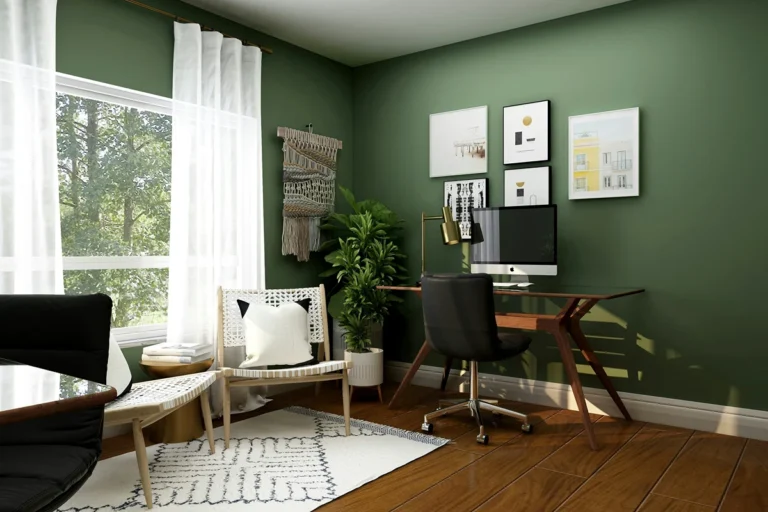It’s Time for an Environment Upgrade
You’ve already done the inner work: your motivation and confidence are high. You’re in the “I’m Ready” quadrant, where energy meets structure. Now, it’s time to move from willpower to environmental design, making your surroundings do the heavy lifting.
A digital environment reset means setting up your physical space to make healthy habits automatic and distraction harder to access. It’s how you turn motivation into momentum. By upgrading your setup, you strengthen self-efficacy: your belief that you can sustain this change.
The Invisible Architecture of Habit Design
Your environment is the stage where every digital habit plays out. Whether you realize it or not, your surroundings continuously cue your behaviors.
According to Social Cognitive Theory, your actions are shaped by a three-way interaction between personal factors, behaviors, and the environment. In digital life, that means your physical surroundings trigger habits long before you consciously decide to reach for your phone.
If your phone sleeps on your nightstand, your brain associates that space with checking notifications. Each glance reinforces the loop. To change the habit, you must change the cue. A digital environment reset interrupts these automatic patterns by redesigning your space to promote calm, focus, and conscious control.
Tweak #1: Introduce Friction to Disrupt Automatic Actions
Strong digital design starts with friction, tiny barriers that slow mindless use and spark awareness.
Researchers describe this as “undesign” – intentionally making access less convenient to encourage reflection. In digital detox studies, participants who simply placed their phones farther away reported higher focus and better sleep.
The Bedside → Hallway Rule
The simplest and most powerful redesign you can make: remove your phone from your bedroom.
- Sleep Science: Studies show that eliminating smartphones from the bedroom improves happiness, restorative sleep, and subjective well-being.
- Habit Design: Move your charger to the hallway or kitchen. If you use your phone as an alarm, replace it with an analog clock.
- The Effect: This single tweak builds friction between impulse and action: preventing the automatic scroll that undermines rest and morning clarity.
When the cue (your phone’s light) disappears, so does the compulsion to check it.
Tweak #2: Designate Tech-Free Zones
Your Ready mindset means you can handle structured, high-impact upgrades. Use that energy to carve out spaces that signal presence, not productivity.
- Physical Boundaries: Create tech-free zones: offline oases that reinforce relaxation and connection. Start with the dining table or bedroom.
- Temporal Boundaries: Layer in screen-free timeframes, like “No screens before 9 a.m.” or one offline evening per week.
- Academic Insight: Research on disconnection practices shows that intentionally restricting device access fosters calm, social connection, and self-reflection.
When your environment supports your boundaries, self-control stops feeling like resistance, it becomes routine.
Conclusion
Your digital environment reset represents the next level of digital wellness. It’s a move from effort to automation, from good intentions to consistent calm.
This isn’t about deprivation: it’s about creating spatial freedom for focus, rest, and connection. As you refine your setup, stay flexible: the goal is progress, not perfection. Environmental tweaks are living systems, keep what works, adapt what doesn’t, and let your setup evolve as you do.
Next Steps
- Start Tonight: Move your phone charger out of the bedroom.
- Create a Zone: Choose one daily meal to be phone-free for seven days.
- Replace the Habit: Add a new analog ritual: reading, journaling, or mindful tea time.
Your environment shapes your mind. When you design for calm, calm becomes your default.
References
- Hughes, N., & Burke, J. (2018). Computers in Human Behavior, 85, 236–244.
- Lally, P. et al. (2010). European Journal of Social Psychology, 40(6), 998–1009.
- Marx, J. et al. (2025). Information & Management, 62, 104068.
- Pierce, J. (2012). Proceedings of the SIGCHI Conference on Human Factors in Computing Systems.
- Wilmer, H. H., & Chein, J. M. (2016). Psychonomic Bulletin & Review, 23(5), 1607–1614.
*Disclaimer: Offline.now offers educational coaching tips, not medical or therapeutic advice; please consult a qualified health professional for personal, clinical or health concerns.*



